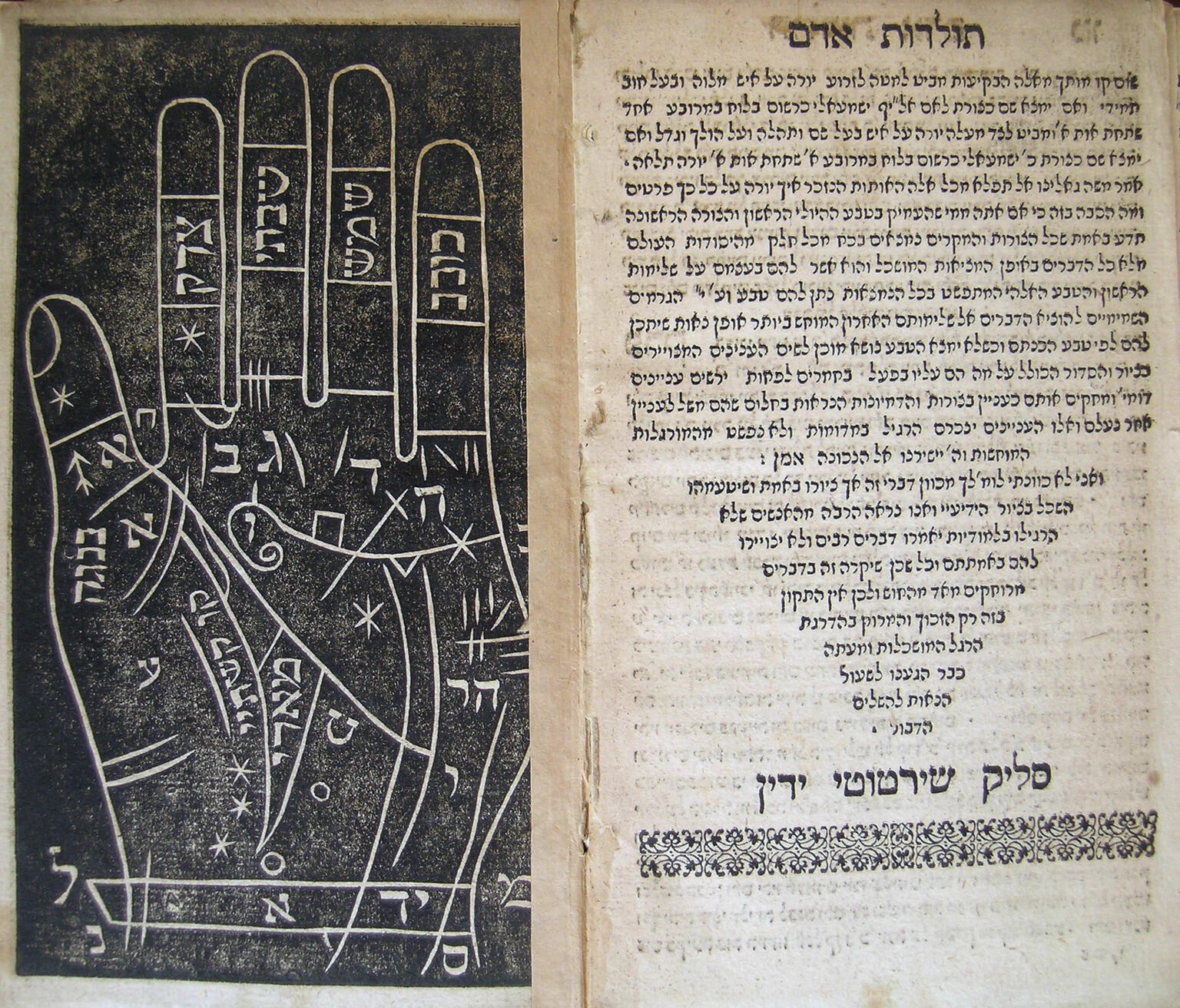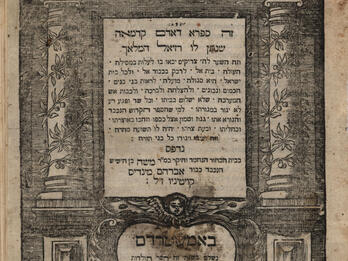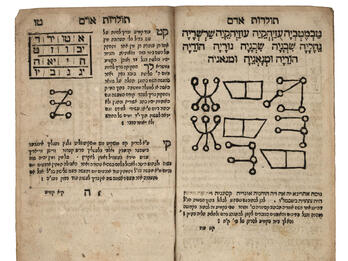Zeh ha-sefer toledot Adam (This Is the Book of the Generations of Adam)
The art of chiromancy (palmistry), which divines a person’s nature and often his or her future by examining the palm and fingers (and sometimes forehead), dates back to the ancient Near East and entered Arabic, Byzantine, and Latin cultures. It first appeared in Jewish tradition during the talmudic and geonic periods, and various texts indicate that medieval kabbalists employed the art. References to examining the lines of a person’s hand and forehead can be found in the Zohar, for example. In the sixteenth century, several Hebrew chiromantic texts were printed. They were based mainly on Arabic, Latin, and German works. One of these, which was particularly influential, was written by the kabbalist, teacher, and translator Moses ben Elijah Gallena, who lived in Crete. His work, which concerns both palmistry and examining the lines of the forehead, was abridged and printed together with a Yiddish translation in the eighteenth century. It was reprinted several times over the eighteenth and nineteenth centuries. Gallena also translated Arabic works on astronomy, astrology, and geomancy into Hebrew.
Credits
Courtesy GFC Trust / William L. Gross.
Published in: The Posen Library of Jewish Culture and Civilization, vol. 5.







!["9. [Image: M9 637 Seder tefilot yesharot u-varot]. Seder Tefilot Yesharot u-barot " Manuscript page of Hebrew text arranged in the shape of a eight-branched candelabrum.](/system/files/styles/entry_card_sm_1x/private/images/vol05/Posen5_blackandwhite165_color.jpg?h=31fc6cc8&itok=ER5JfABc)
![M10 622 Manuscript, probably from Ukraine]. Manuscript probably from Ukraine, c. 1740 with a broad collection of practical kabbalah and mystical magic. Facing page manuscript arranged vertically with Hebrew text in the shape of a figure wielding two long objects.](/system/files/styles/entry_card_sm_1x/private/images/vol05/Posen5_blackandwhite166_color.jpg?h=cec7b3c9&itok=Sz6u21MQ)